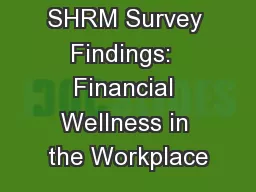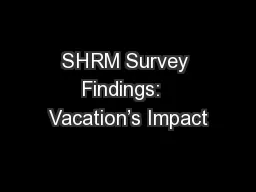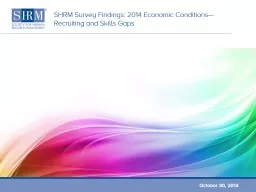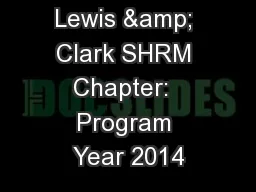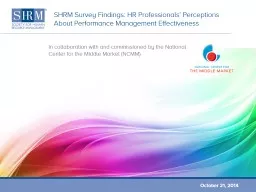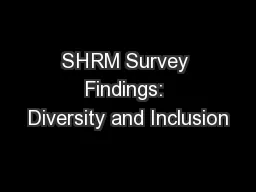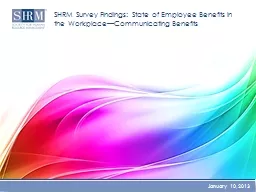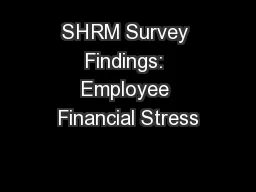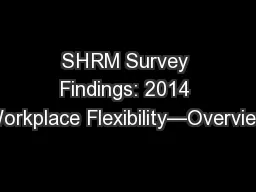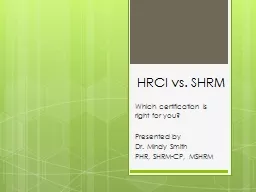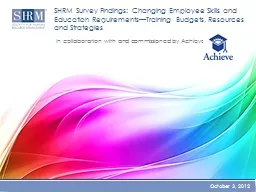PPT-SHRM Survey Findings: Financial Wellness in the Workplace
Author : pasty-toler | Published Date : 2018-11-14
Sponsored by McGrawHill Federal Credit Union May 14 2014 Definitions Financial education Any workplace initiative program or resource designed to provide employees
Presentation Embed Code
Download Presentation
Download Presentation The PPT/PDF document "SHRM Survey Findings: Financial Wellnes..." is the property of its rightful owner. Permission is granted to download and print the materials on this website for personal, non-commercial use only, and to display it on your personal computer provided you do not modify the materials and that you retain all copyright notices contained in the materials. By downloading content from our website, you accept the terms of this agreement.
SHRM Survey Findings: Financial Wellness in the Workplace: Transcript
Download Rules Of Document
"SHRM Survey Findings: Financial Wellness in the Workplace"The content belongs to its owner. You may download and print it for personal use, without modification, and keep all copyright notices. By downloading, you agree to these terms.
Related Documents

